Mark Dery is guest blogger du jour until August 17. He is the author of Culture Jamming, Flame Wars, Escape Velocity, and The Pyrotechnic Insanitarium. He's at work on The Pathological Sublime, a philosophical investigation into the paradox of horrible beauty and the politics of "just looking." 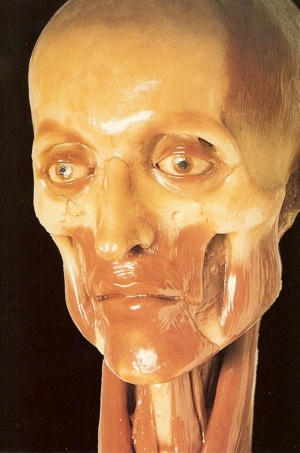 "Why have we not developed an aesthetic of the inside of the body?," wonders one of the twin gynecologists in David Cronenberg's Dead Ringers. He speaks for Cronenberg, who took up the thread in an interview he and I conducted. "We have contests in which we decide who is the most beautiful woman in the world," said Cronenberg, "and yet, if you were to show the inside of that woman's body, you would have a lot of grossed-out people. Why is that? We should be able to have a World's Most Perfect Kidney contest, where women or men unzip to show their kidneys. We can't become integral creatures until we come to terms with our bodies and we haven't come remotely close to that. We're incredibly schizophrenic." "Why have we not developed an aesthetic of the inside of the body?," wonders one of the twin gynecologists in David Cronenberg's Dead Ringers. He speaks for Cronenberg, who took up the thread in an interview he and I conducted. "We have contests in which we decide who is the most beautiful woman in the world," said Cronenberg, "and yet, if you were to show the inside of that woman's body, you would have a lot of grossed-out people. Why is that? We should be able to have a World's Most Perfect Kidney contest, where women or men unzip to show their kidneys. We can't become integral creatures until we come to terms with our bodies and we haven't come remotely close to that. We're incredibly schizophrenic." Cronenberg's visceral aesthetic is bodied forth (so to speak) in La Specola, an 18th century anatomical museum at the University of Florence. It's fitting that the name, from the Latin for mirror (the museum is housed in a former observatory), is close etymological kin to speculum, an instrument used, as every woman knows, to dilate the opening of a body cavity for examination. La Specola is home to a collection of visible women and men, medical teaching aids that comprise some of the finest examples of ceroplasty, the art of modeling anatomical specimens in wax. 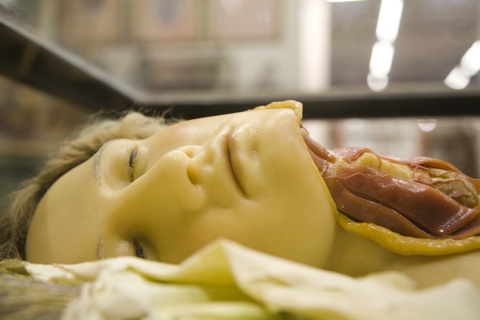
La Specola's waxworks are wondrous strange, indeed---a pathological beauty pageant worthy of Cronenberg's wildest dreams. "Le Grazie Smontate,"the "Dissected Graces" of the master modeler Clemente Susini (1754-1814), is a trio of recumbent young women, their tresses spilling over their shoulders, their shapely legs gracefully arranged, the fat, yellow sausages of their intestines coiled neatly on their disemboweled torsos. Gazing languorously up at the viewer, one grace toys girlishly with a braid, her modesty intact despite her bared entrails. Another sloe-eyed beauty flaunts a pert rosebud of a nipple, seemingly unperturbed by the fact that her breast hangs from a flap of flesh peeled back to expose her heart. The hard nipples; the bent leg partly covering (or coyly revealing?) the downy pubes; the head thrown back, lips slightly parted, in an attitude that hovers unsettlingly between post-orgasmic languor and the marionette floppiness of the corpse: these images tap a subterranean river in the erotic imagination. Behind the curtain of scientific progress and public edification drawn across La Specola lurks the shadow of a more than clinical interest in such things. 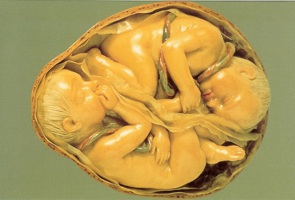 In A Traffic of Dead Bodies: Anatomy and Embodied Social Identity in 19th-Century America, Michael Sappol argues that the popular anatomical museums of the 19th century---that is, those museums open to the general (male) public, as opposed to those for medical professionals only---cannily exploited this pornographic subtext even as they veiled it in moral sanctimony. "[B]eginning in the 1830s and intensifying in succeeding decades, there arose a variety of anatomical entrepreneurs, eager to cultivate, exploit, and cater to the audience for anatomy through anatomical museums and exhibits,"writes Sappol. "And from the outset...anatomy was assimilated to the purposes of satisfying and profiting from the demand for sexual material, to its critics pornography." Hillel Schwartz has his finger on the source of the Venus's bizarre charms when he writes, "The female anatomical figure with removable parts...was truly a pedagogical tool, but in wax it also suggested malleability, voluptuousness, and morbidezza: delicate flesh." There's a voluptuous luster to her beeswax-and-animal fat flesh that makes her uncannily lifelike, more so after two centuries than modern waxworks made of synthetic paraffins or the latex-skinned grotesques in theme-park robot dramas. Unlike an actual cadaver, whose waxy pallor makes it look as lifeless as a mannequin, the Dissected Venus seems almost to glow, if not with life, with a robust undeath. 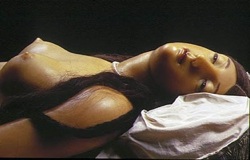 Of course, any poetic reveries about the sex appeal of Dissected Venuses must take account of the extent to which these wax women hold a mirror up to culture rather than the nature---specifically, the Enlightenment culture into which they were born, when scientists were busy weaving myths about gender and the "natural order" that denied women the democratic promise of the Declaration of the Rights of Man and Citizen (1789) and redefined them as weaker vessels, consecrated to procreation and (male) recreation. The anatomical models of the day dramatized this reduction of woman to womb. But, all that said, the creepy seductions of eviscerated wax women can't be neatly disposed of as a misogynist's guilty pleasure. There's more to La Specola's anatomical models than meets the male gaze. They were essential aids to medical pedagogy and obscure objects of desire, disseminating life-saving knowledge about female anatomy even as they reaffirmed the primacy of women's sexual and maternal functions. Now, more than two hundred years after their birth, the anatomical Venuses still taunt us. The morbid fantasies they inspire are reviled by feminist critics and relished by aesthetic transgressors in the Bataillean mode. 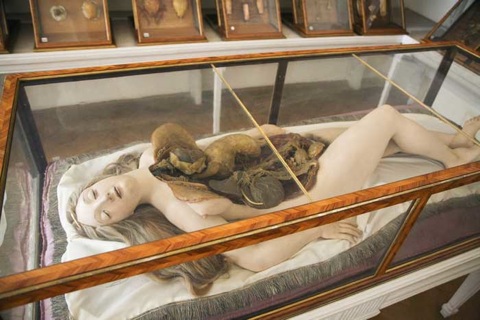
Walking from vitrine to vitrine, in La Specola, I'm mesmerized by the visceral charms of these obstetric Ophelias, floating through the centuries on suggestively rumpled sheets. I can't tear my eyes away from the hallucinogenically vivid colors of their coiled intestines, no less lovingly modeled than their unmistakably Florentine faces. Their sheets are brittle, fraying to ribbons, but they seem not to have aged a day since they were first unveiled to the public eye in 1780. Analyzing the welter of conflicting reactions, philosophical and psychological, that they inspire, I recognize these Aphrodites of the Operating Theater as disquiet muses of the Pathological Sublime---sisters of the nude sleepwalkers in Paul Delvaux's surrealist nocturnes, or of the naked victim in Duchamp's creepy, Hitchcockian last work, a museum-style diorama of a sex murder called Étant donnés. I think of the Victorian critic Walter Pater's famous meditation on the Mona Lisa: 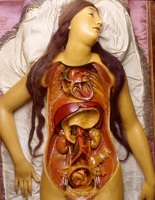 [L]ike the vampire, she has been dead many times, and learned the secrets of the grave; and has been a diver in deep seas, and keeps their fallen day about her; and trafficked for strange webs with Eastern merchants: and, as Leda, was the mother of Helen of Troy, and, as Saint Anne, the mother of Mary; and all this has been to her but as the sound of lyres and flutes, and lives only in the delicacy with which it has molded the changing lineaments, and tinged the eyelids and the hands. [L]ike the vampire, she has been dead many times, and learned the secrets of the grave; and has been a diver in deep seas, and keeps their fallen day about her; and trafficked for strange webs with Eastern merchants: and, as Leda, was the mother of Helen of Troy, and, as Saint Anne, the mother of Mary; and all this has been to her but as the sound of lyres and flutes, and lives only in the delicacy with which it has molded the changing lineaments, and tinged the eyelids and the hands.
F. Gonzalez-Crussi calls wax modeling, which replaced the cadaver on the dissection table with a lifelike simulacrum, "the first successful effort we undertook to distance ourselves from the dead. Since then, we have not ceased in our efforts to deepen the gulf."The invention of ceroplasty marks the beginning of the history of the virtual cadaver, an ongoing chronicle whose latest chapter is the Visible Human Project, in which a male corpse was sliced into 1871 millimeter-thin sections with a laser, digitized, and transformed into a navigable 3-D atlas of the human body, accessible via the World Wide Web. 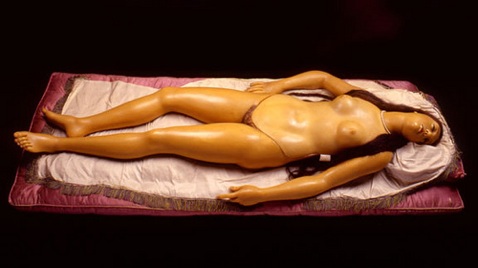
Paradoxically, wax anatomical models also recall us to a time when death and disease were an everyday affair and we were able to establish what Gonzalez-Crussi calls "a certain communion with the dead." La Specola's wax women offer a taste of that sacrament. LA SPECOLA
Via Romana, 17 - 50125 Firenze
telefono biglietteria 055 2288251
Orario di apertura al pubblico: tutti i giorni dalle 9.30 alle 16.30
chiusura: lunedì
chiusure annuali: 1 gennaio, Pasqua, 1 maggio, 15 agosto, 25 dicembre
More here, courtesy the droll, endlessly fascinating Atlas Obscura, and here, at the redoubtable Curious Expeditions, and here.
Photos (except Specola Head and La Specola Twins In Utero): Joanna Ebenstein, Morbid Anatomy.com. All rights reserved.
Specola Head and La Specola Twins In Utero: Postcards. Reproduced under Fair Use provision of copyright law.
  |
No comments:
Post a Comment